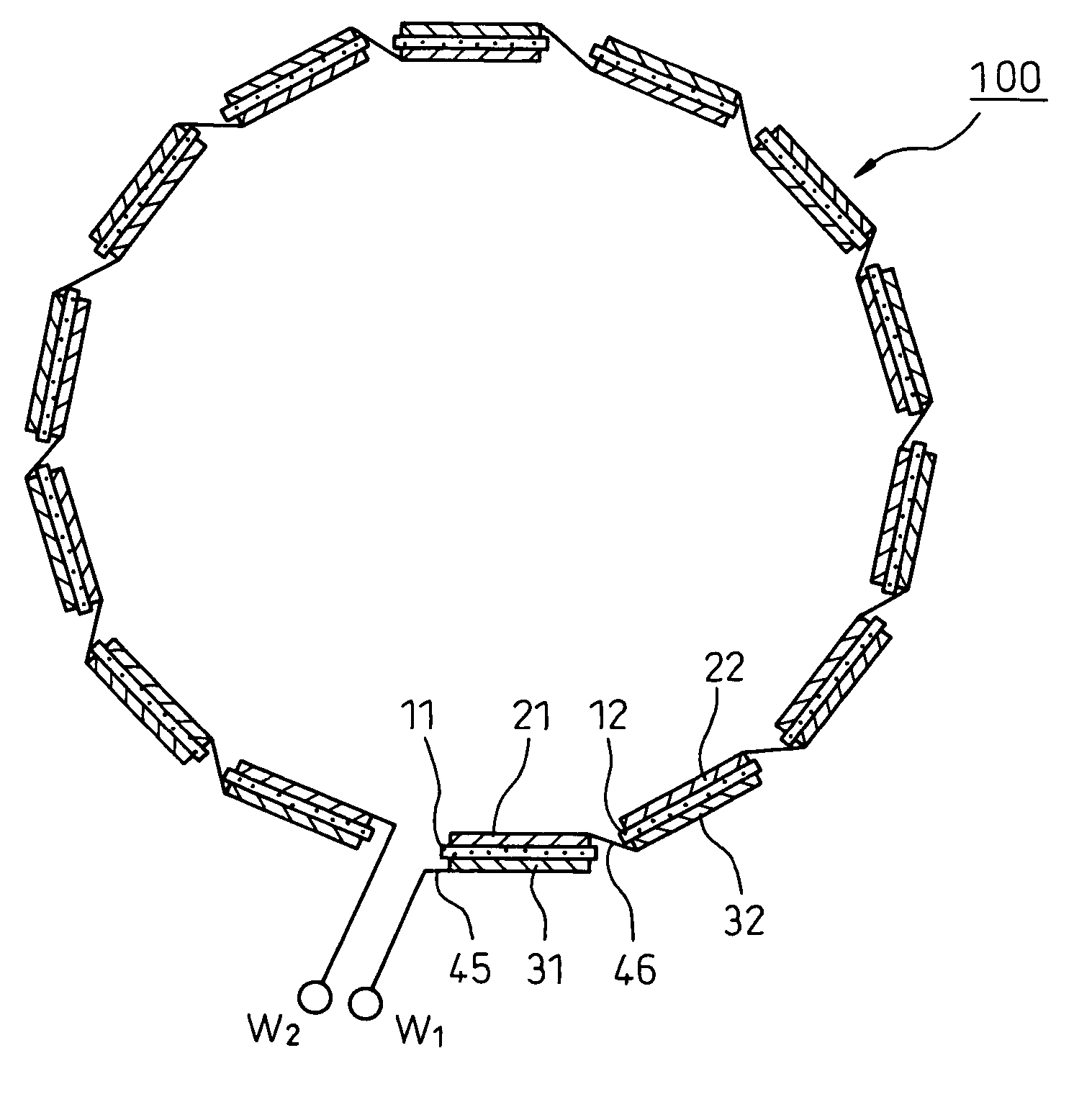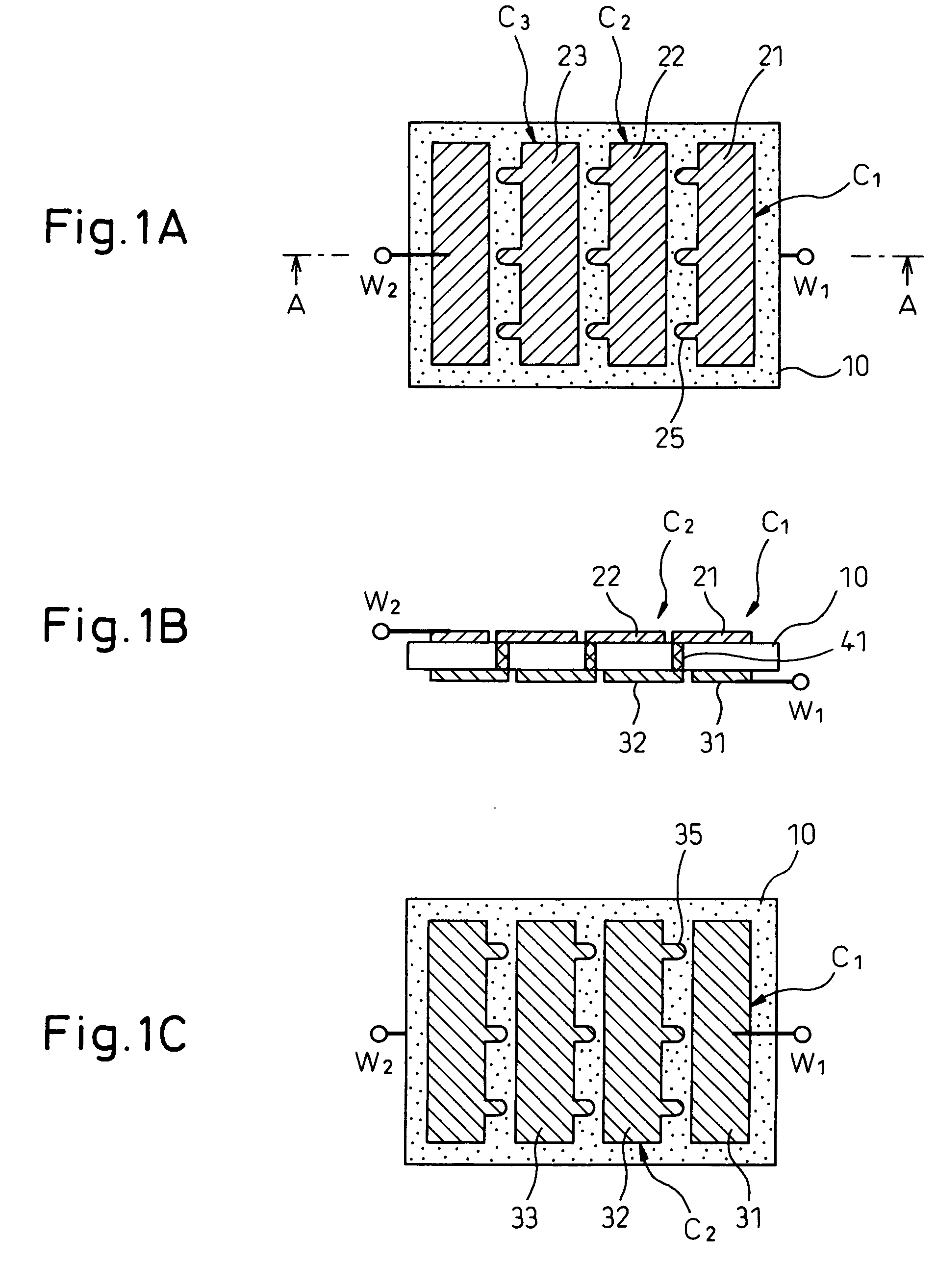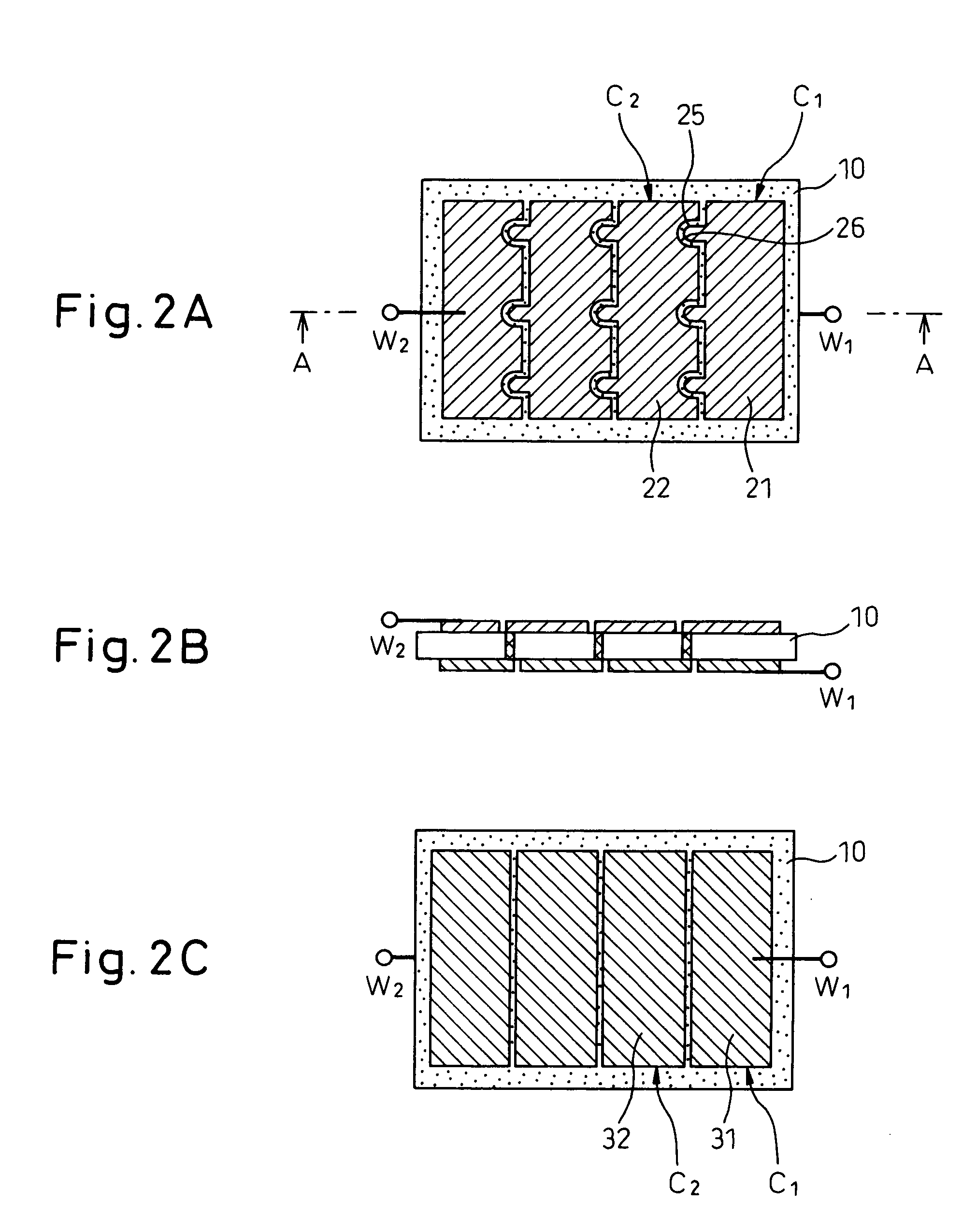Solid electrolyte fuel cell configuration
a fuel cell and solid electrolyte technology, applied in the field of solid electrolyte fuel cell configuration, can solve the problems of reduced cell configuration performance, difficulty in improving the durability of the fuel cell, and danger of explosion of mixed fuel gas, so as to reduce the size, improve the durability, and reduce the cost
- Summary
- Abstract
- Description
- Claims
- Application Information
AI Technical Summary
Benefits of technology
Problems solved by technology
Method used
Image
Examples
first embodiment
[0052]FIGS. 1A to 1C show the configuration of a solid electrolyte fuel cell configuration according to a first embodiment of the present invention. FIG. 1A is a plan view of the basic configuration viewing the solid electrolyte fuel cell configuration from an anode side, FIG. 1B is a cross-sectional view along the line A-A, and FIG. 1C is a plan view of the basic configuration viewed from a cathode side.
[0053] In the solid electrolyte fuel cell configuration making direct use of a flame according to the related art, the solid electrolyte layer was tubular in shape, so the ratio of exposure of the flame to the anode layer formed at the outside of the solid electrolyte layer was poor. Further, a single fuel cell was formed by a single tubular solid electrolyte layer. Therefore, in the solid electrolyte fuel cell configuration of the first embodiment, the solid electrolyte layer was shaped as a sheet. For example, a solid electrolyte substrate using a thin sheet was used. One surface...
second embodiment
[0080]FIGS. 2A to 2C show the configuration of a solid electrolyte fuel cell configuration according to a second embodiment of the present invention. FIG. 2A is a plan view of the basic configuration viewing the solid electrolyte fuel cell configuration from an anode side, FIG. 2B is a cross-sectional view along the line A-A, and FIG. 2C is a plan view of the basic configuration viewed from a cathode side. Only the parts different from the first embodiment shown in FIGS. 1A to 1C will be explained.
[0081] In the first embodiment, both the plurality of rectangular anode layers 21, 22 . . . formed on one surface of the single solid electrolyte substrate 10 and the plurality of rectangular cathode layers 31, 32 . . . formed on the other surface have gaps between adjoining anode layers and cathode layers of at least the regions required for forming the projections 25, 35. In the second embodiment, however, the gaps between the adjoining anode layers and cathode layers are made narrower ...
third embodiment
[0087]FIGS. 3A to 3C show the configuration of a solid electrolyte fuel cell configuration according to a third embodiment of the present invention. FIG. 3A is a plan view of the basic configuration viewing the solid electrolyte fuel cell configuration from an anode side, FIG. 3B is a cross-sectional view along the line A-A, and FIG. 3C is a plan view of the basic configuration viewed from a cathode side. Only the parts different from the second embodiment shown in FIGS. 2A to 2C will be explained.
[0088] In the third embodiment, a single solid electrolyte substrate 10 is formed with a total of (4×4=) 16 fuel cells C1, C2 . . . in lattice-shaped or grid-shaped sections in the vertical direction and horizontal direction. In the first column, the anode layers of the fuel cells and the cathode layers of the adjoining fuel cells are successively serially connected straight in the same way as the above embodiments, the anode layers of the fuel cells are connected at the ends of the colum...
PUM
| Property | Measurement | Unit |
|---|---|---|
| drive temperature | aaaaa | aaaaa |
| temperature | aaaaa | aaaaa |
| porosity | aaaaa | aaaaa |
Abstract
Description
Claims
Application Information
 Login to View More
Login to View More - R&D
- Intellectual Property
- Life Sciences
- Materials
- Tech Scout
- Unparalleled Data Quality
- Higher Quality Content
- 60% Fewer Hallucinations
Browse by: Latest US Patents, China's latest patents, Technical Efficacy Thesaurus, Application Domain, Technology Topic, Popular Technical Reports.
© 2025 PatSnap. All rights reserved.Legal|Privacy policy|Modern Slavery Act Transparency Statement|Sitemap|About US| Contact US: help@patsnap.com



